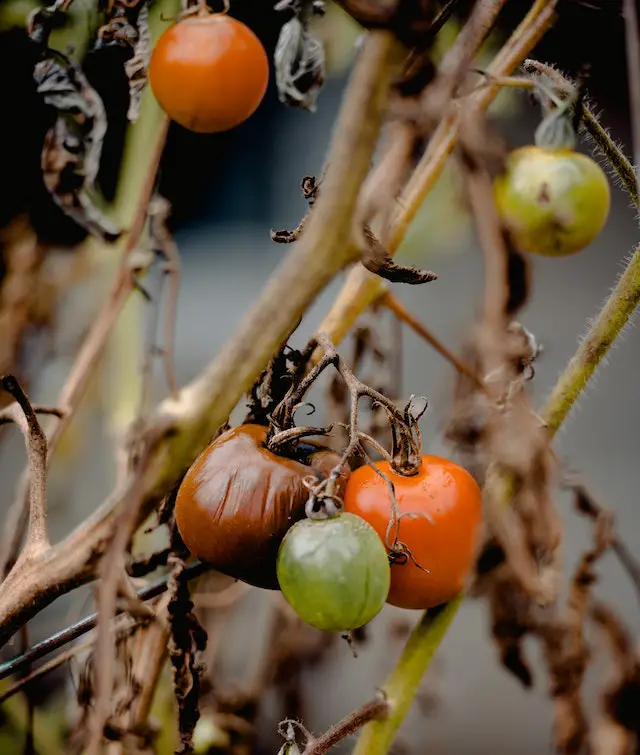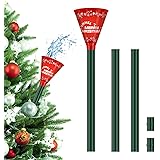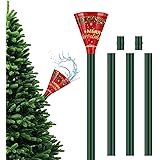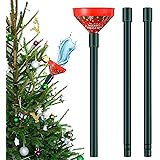Tomato plants, the red, juicy fruit we all love, are an essential part of many gardens and recipes. But as a gardener or tomato enthusiast, you might have asked yourself: “Do tomatoes die after fruiting?” The short answer is yes, but there’s much more to the story than meets the eye.
This interesting and in-depth article will explore the fascinating world of tomatoes and provide answers to some frequently asked questions about these delectable, multipurpose fruits.
The Life and Times of Tomato Plants
Tomatoes are annual plants, which means they complete their life cycle in a single growing season. This life cycle involves germination, development, blossoming, fruiting death.
However, a tomato plant’s lifespan is influenced by its variety, the environment in which it grows, and the attention the gardener gives it.
It all starts with a tiny seed. When a tomato seedling emerges from the germination process of several weeks, it grows into a mature plant. As the plant continues to grow, it produces flowers, which are then pollinated to form fruit.
The tomato fruit will start off as small green orbs, gradually increasing in size and changing color as they ripen. Once the tomatoes are ripe, they can be harvested, and this is where many gardeners might think the tomato plant’s story ends. But there’s more to learn about the tomato plant’s journey, as well as the do’s and don’ts after fruiting.
Read More: About How to Grow Bonsai Tomato Plants
The Great Tomato Misconception
Many people believe that once a tomato plant has produced fruit, its life is over. This is a common misconception. In reality, a healthy tomato plant can continue to produce fruit throughout its growing season.
The plant can continue to flower and produce fruit until the completion of its natural life cycle or the end of the growing season as long as it is healthy and well-maintained.
As a result, you could theoretically gather tomatoes from the same plant multiple times throughout the growing season.
To accomplish this, you must have a thorough understanding of the needs of the plant and give it the proper care, such as an adequate supply of water and nutrients as well as protection from pests and diseases.
The End of the Tomato Road
So, when does a tomato plant truly reach the end of its life?
This depends on a number of variables. Tomato plants typically die at the conclusion of their growing season, which is typically characterized by colder temperatures and fewer daylight hours.
Tomato plants will struggle to produce fruit and will start to decline when temperatures consistently fall below 50°F (10°C). Frost is the ultimate killer of tomato plants, as they are not frost-tolerant. Once exposed to frost, the plant’s tissues will be damaged and it will die shortly after.
A tomato plant may occasionally die before the season is over because of a disease, pests, or unfavorable growing conditions. It’s essential to monitor your plants closely and address any issues promptly to ensure a healthy, fruitful life for your tomato plants.
The Science Behind Tomato Plant Death
You may wonder what exactly causes a tomato plant to die after fruiting. The answer lies in the plant’s biology and its response to environmental factors. As an annual plant, a tomato has a predetermined life cycle programmed into its genetic makeup. The process of life includes germination, growth, flowering, fruiting, and eventual death.
During the fruiting stage, the tomato plant redirects its energy from vegetative growth to the production of fruit. This is a critical stage, as the plant needs to produce seeds to ensure the continuation of its genetic lineage. Once the plant has produced a sufficient amount of seeds within the fruit, it has fulfilled its biological purpose.
As the growing season goes on and environmental factors, like shorter days and colder temperatures, change, the plant starts to get signals that its life cycle is coming to an end. It will stop producing new flowers and fruit, focusing its remaining energy on ripening the existing fruit. Eventually, the plant will succumb to the changing conditions and die.
Tips for Prolonging Your Tomato Plant’s Life
Although tomato plants naturally die at the end of their life cycle, there are some things you can do to extend their life and increase fruit production:
- Choose the right variety
Some tomato varieties have longer growing seasons or are better suited to specific climates. Do some research to find the best variety for your area and growing conditions.
- Provide proper care
Ensure your tomato plants receive adequate water, sunlight, and nutrients. Regularly check for and address any signs of pests or diseases.
- Prune strategically
Pruning your tomato plants can help direct energy toward fruit production and extend their life. Remove suckers, the small shoots that grow in the crotch between the main stem and a branch, to direct energy toward fruit growth. Additionally, remove any dead or diseased foliage.
- Support your plants
Stake or cage your tomato plants to keep them off the ground, improving air circulation and reducing the risk of disease.
- Extend the growing season
If you live in an area with a short growing season, consider using techniques like cold frames or greenhouses to extend the season and provide your tomato plants with more time to produce fruit.
By following these tips, you can help your tomato plants live their best life and produce an abundant harvest throughout the growing season.
In the end, tomato plants may die after fruiting, but their life cycle is a fascinating journey filled with growth, flowering, and delicious fruit production. By understanding their life cycle and providing the proper care, you can make the most of your tomato plants and enjoy a bountiful harvest each year.
Read More: About Marigold-Tomato Connection
FAQ: Your Tomato Questions Answered
No, tomatoes are annual plants, which means they complete their life cycle in a single growing season. You will need to plant new tomato seeds or seedlings each year to enjoy a fresh harvest of tomatoes.
The end of life for a tomato plant is typically when it has completed its life cycle or when the growing season ends. It typically happens when temperatures consistently fall below 50°F (10°C) or when the plant is exposed to frost.
Yes, a healthy tomato plant can continue to produce fruit after the initial harvest. It is possible for a plant to continue to flower and bear fruit throughout its growing season as long as it is given proper care and ideal growing conditions.
Once your tomatoes are picked, you can use them in a variety of dishes, can or dry them for later use, or give them to family and friends. After the final harvest, it’s essential to clean up the garden by removing the spent tomato plants and any remaining debris. This helps prevent diseases and pests from overwintering in your garden and affecting future crops.
The month when tomatoes stop growing depends on your location and climate. In the majority of regions, tomato plants will stop growing and producing fruit when temperatures drop consistently below 50°F (10°C) and when they are exposed to frost. This usually happens in the fall, but the precise month depends on the weather in your area.
At the end of the season, harvest any remaining ripe or nearly ripe tomatoes. Green tomatoes can also be picked and used in recipes like fried green tomatoes or green tomato relish. You can also ripen green tomatoes indoors by placing them in a paper bag or cardboard box with a ripe banana or apple to release ethylene gas, which aids in ripening. Remember to clean up your garden after the final harvest to prevent diseases and pests from overwintering in the soil.
Wrapping Things Up
In conclusion, while tomato plants do eventually die after fruiting, a healthy plant can continue to produce fruit throughout its growing season. By understanding the tomato plant’s life cycle and providing proper care, you can enjoy a bountiful harvest from your garden.
Just remember that tomatoes are annual plants, so you’ll need to start anew each year to savor the delicious taste of homegrown tomatoes.
Auto Amazon Links: No products found.
Perfect Plants Christmas Tree Saver 8oz. | Easy Use Xmas Tree Preserver Food | Have Healthy Green Christmas Trees All Holiday Season
$9.97 (as of December 3, 2025 00:36 GMT +00:00 - More info- Product prices and availability are accurate as of the date/time indicated and are subject to change. Any price and availability information displayed on [relevant Amazon Site(s), as applicable] at the time of purchase will apply to the purchase of this product.
Kaiedos Christmas Tree Watering Funnel - 39 Inch Funnel, Reusable Design, Makes Watering Your Live Tree a Snap!
$14.99 (as of December 3, 2025 00:36 GMT +00:00 - More info- Product prices and availability are accurate as of the date/time indicated and are subject to change. Any price and availability information displayed on [relevant Amazon Site(s), as applicable] at the time of purchase will apply to the purchase of this product.
Christmas Tree Watering Funnel, Real Christmas Tree Water Long Funnel About 40 Inch, Trees Watering System for Water Indoor Outdoor
$15.99 (as of December 3, 2025 00:36 GMT +00:00 - More info- Product prices and availability are accurate as of the date/time indicated and are subject to change. Any price and availability information displayed on [relevant Amazon Site(s), as applicable] at the time of purchase will apply to the purchase of this product.
IPOOLTENG Christmas Tree Watering Funnel 3 Tube 1 Funnels 40 Inch - 3 Section Plastic Christmas Tree Funnel Waterer, Long Funnels for Watering Trees, Best Gifts for Your Parents to Water Tree
$15.53 (as of December 3, 2025 00:36 GMT +00:00 - More info- Product prices and availability are accurate as of the date/time indicated and are subject to change. Any price and availability information displayed on [relevant Amazon Site(s), as applicable] at the time of purchase will apply to the purchase of this product.
1 Pack Christmas Tree Watering Funnel System, 44 Inch Christmas Tree Watering Stick with Adjustable 3-Section Design, Reusable & Spill-Free, Xmas Plant Waterer Tool for Indoor and Outdoor
$16.99 (as of December 3, 2025 00:36 GMT +00:00 - More info- Product prices and availability are accurate as of the date/time indicated and are subject to change. Any price and availability information displayed on [relevant Amazon Site(s), as applicable] at the time of purchase will apply to the purchase of this product.
Cuisinart 6.5" Cast Iron Smashed Burger Press, Round Flat Edge Grill Press for Crispy Smash Burgers, Burger Tool for Grill and Griddle Accessories, for BBQs and Tailgates
$9.99 (as of November 30, 2025 15:21 GMT +00:00 - More info- Product prices and availability are accurate as of the date/time indicated and are subject to change. Any price and availability information displayed on [relevant Amazon Site(s), as applicable] at the time of purchase will apply to the purchase of this product.
Muddy Mat® Shown on TV Super Absorbent Microfiber Dog Door Mat for Muddy Paws, Non-Slip Washable Pet Rug, Quick Dry Chenille Entryway Carpet, Machine Washable Indoor Outdoor mat, Grey 30"x19"
$18.78 (as of November 30, 2025 15:21 GMT +00:00 - More info- Product prices and availability are accurate as of the date/time indicated and are subject to change. Any price and availability information displayed on [relevant Amazon Site(s), as applicable] at the time of purchase will apply to the purchase of this product.
Zevo Flying Insect Trap Official Refill Cartridges - Fits Both Zevo Trap & MAX Indoor Fly Trap - Authentic Trap+Lock Technology to Catch Gnats, House & Fruit Flys (4 Official Refill Cartridges)
$14.97 (as of November 30, 2025 15:21 GMT +00:00 - More info- Product prices and availability are accurate as of the date/time indicated and are subject to change. Any price and availability information displayed on [relevant Amazon Site(s), as applicable] at the time of purchase will apply to the purchase of this product.
ThermoPro TP16 Large LCD Digital Cooking Food Meat Thermometer for Smoker Oven Kitchen BBQ Grill Thermometer Clock Timer with Stainless Steel Temperature Probe
$17.99 (as of November 30, 2025 15:21 GMT +00:00 - More info- Product prices and availability are accurate as of the date/time indicated and are subject to change. Any price and availability information displayed on [relevant Amazon Site(s), as applicable] at the time of purchase will apply to the purchase of this product.
TERRO Ant Killer Bait Stations T300B - Liquid Bait to Eliminate Ants - Bait System - 12 Count Stations for Effective Indoor Ant Control
$10.86 (as of November 30, 2025 15:21 GMT +00:00 - More info- Product prices and availability are accurate as of the date/time indicated and are subject to change. Any price and availability information displayed on [relevant Amazon Site(s), as applicable] at the time of purchase will apply to the purchase of this product.













